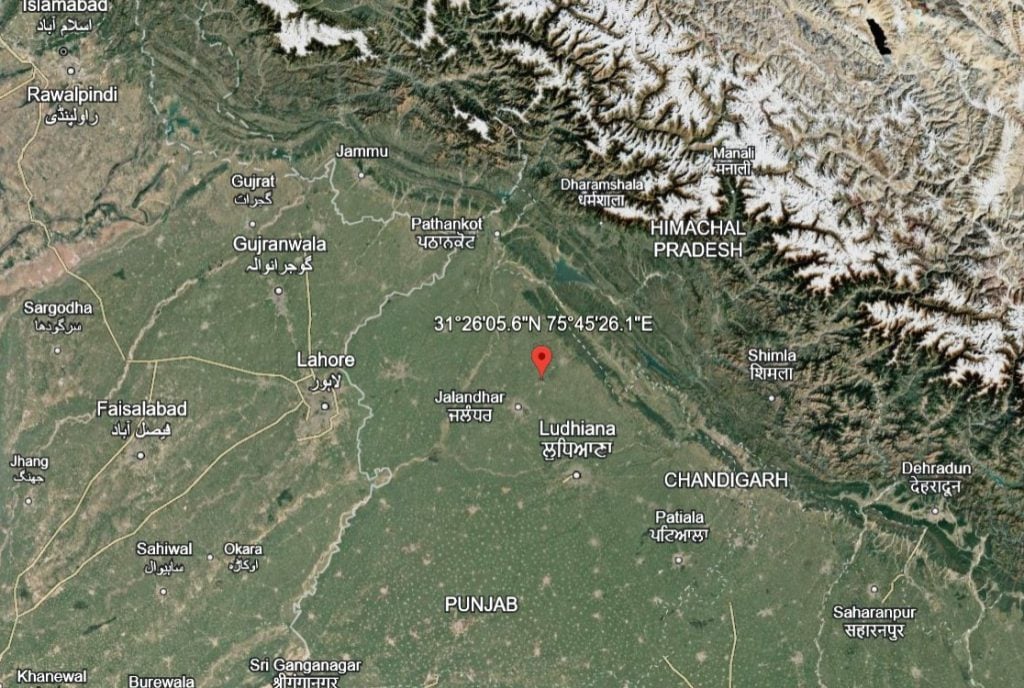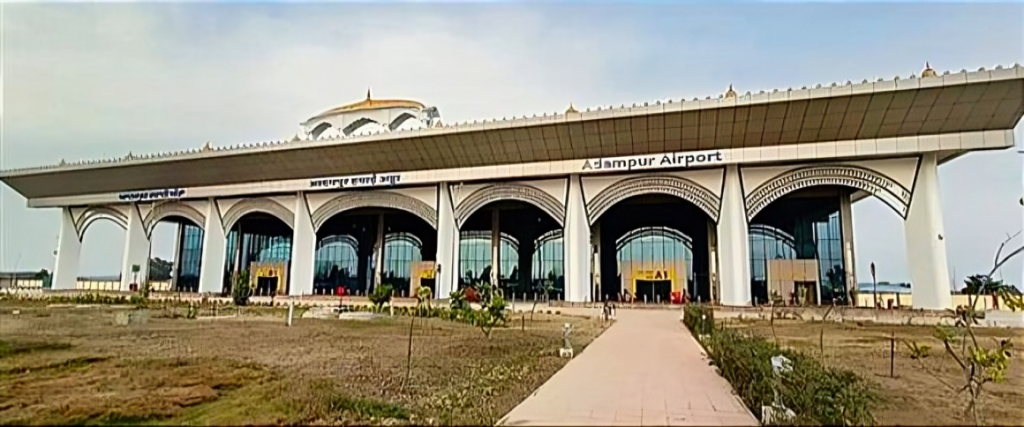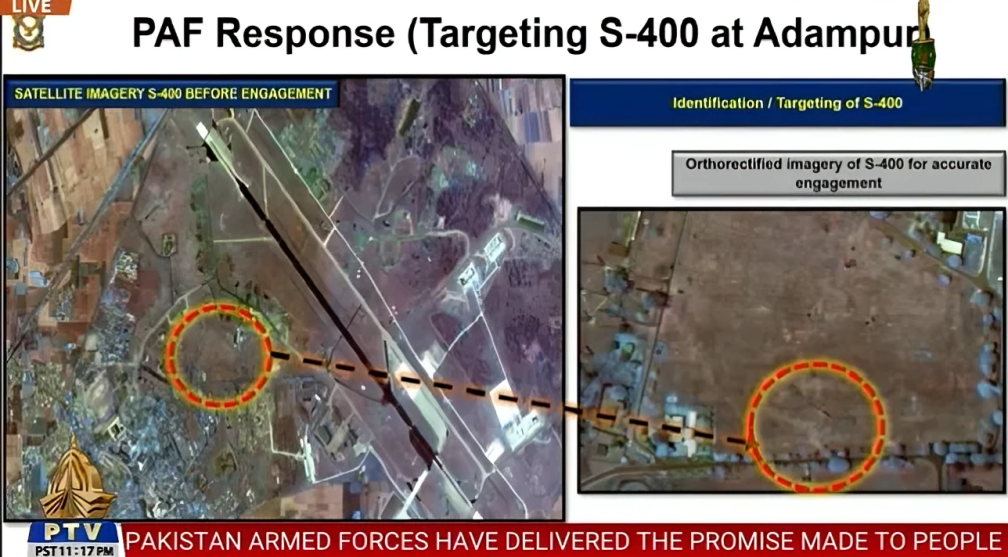Prime Minister Narendra Modi’s visit to Adampur Air Base on May 10, 2025, has drawn renewed national attention to one of India’s most significant air force stations. Located in Punjab, Adampur Air Base has long served as a crucial pillar in India’s air defence network, particularly in safeguarding the country’s northwestern front. As India accelerates its military modernization and regional security challenges evolve, the strategic relevance of this base continues to grow. This article delves into the military, strategic, and political significance of the Adampur Air Base, and examines why it remains a cornerstone of India’s defence infrastructure.
History and Legacy of Adampur Air Base
Established in the early 1950s, Adampur Air Base is the second largest air force station of the Indian Air Force (IAF) and holds a prominent place in the country’s military aviation history. Situated near Jalandhar in Punjab, and just about 100 km from the India-Pakistan border, Adampur has long served as a frontline defence outpost, especially during the Indo-Pakistani wars of 1965 and 1971.

Early Establishment and Development
The base was initially formed on March 16, 1950, as No. 305 Wing, and was later redesignated as No. 8 Wing in 1956. Its creation was part of the IAF’s post-independence expansion strategy aimed at reinforcing India’s air defence and strike capabilities, particularly along the western front. Adampur’s location was chosen strategically, enabling it to house fighter squadrons and support rapid air operations close to the border.
Crucial Role in the 1965 Indo-Pakistani War
Adampur played a pivotal role during the 1965 Indo-Pakistani War. On September 6, 1965, Pakistan launched pre-emptive airstrikes on several Indian airbases, including Adampur, Halwara, and Pathankot. However, the strike on Adampur failed when the Pakistani aircraft retreated before reaching the base.
In a dramatic follow-up, the Pakistan Air Force (PAF) attempted an airborne commando raid by dropping 135 Special Services Group (SSG) para-commandos near key airfields, including Adampur. In a remarkable show of civilian bravery, local villagers in the Adampur area captured most of the paratroopers and handed them over to the authorities. Only a handful of the attackers managed to escape back to Pakistan, showcasing both the base’s preparedness and the active involvement of the local community in national defence.
Operationally, Adampur was home to No. 1 Squadron IAF, which carried out significant offensive missions during the war. The squadron struck high-value targets such as the Sargodha Air Base in Pakistan, severely disrupting enemy air operations and logistics. These sorties played a critical role in supporting Indian ground forces and asserting air superiority.
Contribution During the 1971 Indo-Pakistani War
Adampur again emerged as a key player during the 1971 Indo-Pakistani War. On December 3, 1971, Pakistan launched Operation Chengiz Khan, targeting Indian airbases including Pathankot, which suffered considerable runway damage. In response, Adampur provided essential interceptor cover and remained fully operational throughout the war.
Under the leadership of Air Marshal Randhir Singh, Adampur Air Base maintained high morale and combat readiness. Pilots flew continuous sorties supporting Indian Army advances and striking enemy positions across the western front, including near Lahore. Aircraft such as the Su-7 and MiG-21 flew nearly a third of all sorties on this front, reflecting the base’s intense involvement in the conflict. Its robust training and operational discipline were later credited with helping it avoid major damage or penetration during the war.
Continued Legacy
- The 1965 parachute assault by Pakistani commandos remains a defining moment in the base’s history, with local villagers playing a heroic role in safeguarding the airfield.
- During the Kargil War in 1999, aircraft operating from Adampur, including Mirage 2000 jets from No. 7 Squadron, struck crucial enemy positions such as Tiger Hill, Muntho Dhalo, and Tololing, highlighting the base’s continued strategic relevance.
- In recent decades, Adampur has undergone constant modernization, including proposals in the 2010s to develop it into a commercial airport to improve regional connectivity. This reflects not only its military importance but also its potential civil value.

Geostrategic Importance
Adampur Air Base holds exceptional geostrategic value for India, primarily due to its proximity—just about 100 kilometers—to the international border with Pakistan. This location makes it one of the Indian Air Force’s (IAF) most critical forward-operating bases, capable of launching rapid responses to any hostile activity or military escalation along the western frontier. Its positioning enables swift surveillance, early threat detection, and immediate deployment of air assets, making it essential for both defensive and offensive operations in a volatile region.
Adampur Air Base is strategically located in Punjab near Jalandhar, at approximately 31.43°N latitude and 75.76°E longitude. Its position places it within close proximity to several other key Indian Air Force (IAF) installations, forming a critical network of defense infrastructure along India’s western front. To the north-northwest, about 70 kilometers away, lies Pathankot Air Force Station, which hosts helicopter squadrons and Apache attack helicopters, serving as a vital base for rotary-wing operations near the border. Approximately 60 kilometers to the south-southeast is Halwara Air Force Station near Ludhiana, home to Su-30MKI fighter squadrons and part of the IAF’s Western Air Command. Around 90 kilometers west of Adampur is Amritsar Air Force Station, located close to the India-Pakistan border, enhancing frontline surveillance and response capabilities. Bathinda Air Force Station, situated about 150 kilometers to the southwest, plays a key role with its deployment of Rafale squadrons. Meanwhile, Chandigarh Air Force Station, around 120 kilometers to the southeast, functions primarily as a hub for transport aircraft and helicopters. Collectively, these bases create a layered and coordinated defense grid, with Adampur centrally positioned to support rapid deployment and joint operational readiness in northern India.

The base also functions as a forward platform for surveillance operations and rapid fighter squadron deployments, and supports missile defence systems. A clear example of its strategic value was the deployment of India’s first S-400 Triumf long-range air defence system at Adampur. With a range of up to 600 km, the S-400 significantly extends the IAF’s ability to monitor and neutralize airborne threats, covering substantial portions of Pakistani airspace. Its integration with other IAF assets enhances layered defence capabilities, positioning Adampur as a powerful node in India’s air defence grid.

Operational Capabilities
Adampur Air Base is one of the Indian Air Force’s (IAF) most critical operational hubs, hosting several advanced fighter squadrons, including the Su-30MKI, a premier multirole air superiority aircraft. The presence of these fighters reflects the base’s capability to execute a wide range of missions—ranging from air dominance and interception to deep strike operations—ensuring both strategic flexibility and combat readiness.
The base is equipped with modern radar systems and missile defense infrastructure, which strengthen its ability to monitor, track, and respond to airborne threats in real time. These systems enhance the IAF’s ability to maintain a vigilant defensive posture along India’s sensitive western front, while also supporting rapid mobilization for offensive operations when necessary.
Adampur also features comprehensive maintenance, repair, and logistical support facilities, which ensure the high operational availability of its aircraft and systems. This infrastructure enables sustained sortie generation, allowing the base to support round-the-clock aerial patrols, intercept missions, and coordinated strike operations.

Role In Operation Sindoor
Adampur Air Base played a pivotal role in Operation Sindoor, India’s precision strikes on terror camps located in Pakistan and Pakistan-occupied Kashmir, launched on May 7, 2025. As one of the Indian Air Force’s key forward-deployed bases near the western border, Adampur was instrumental in maintaining air defense readiness and facilitating offensive air operations during the height of the conflict.
Equipped with frontline fighter squadrons such as the MiG-29s, the base was actively involved in launching air-to-ground strikes on identified terror infrastructure across the border. These squadrons ensured India’s ability to strike with accuracy and maintain aerial superiority, even in the face of escalating hostilities.
In response to India’s initial strikes, Pakistan launched a series of missile and drone attacks on May 9 and 10, targeting strategic IAF bases, including Adampur. Thanks to a well-coordinated air defense network and rapid threat detection capabilities, Adampur successfully intercepted these threats, preventing any damage to its runways, aircraft, or infrastructure. This quick and effective defense allowed the IAF to sustain momentum in its operations and preserve its readiness posture throughout the conflict.
Fake Claims By Pakistan
PAF’s Chief Spokesperson had falsely claimed that they had hit the runway, destroyed the S-400 air defense system, and successfully targeted radar systems with drones. Additionally, Pakistan claimed that missiles had destroyed aircraft at the base and that as many as 60 personnel were killed in the strikes. To support these assertions, Pakistan circulated morphed satellite imagery of Adampur, suggesting the base was severely damaged. They also claimed that Adampur was rendered out of action for years.
Here is the video:

However, these allegations were swiftly debunked by India, with satellite imagery and on-ground reports confirming that the base remained fully operational, further strengthened by Prime Minister Modi’s visit to the base, which demonstrated its intact infrastructure and readiness.
PM Modi’s visit and picture in front of S-400 Defence System is symbolic showing how Pakistan does nothing but spreads fake propaganda.
Significane of The Visit
Prime Minister Narendra Modi’s surprise visit to Adampur Air Base on May 13, 2025, carried significant symbolism and strategic messaging amidst the ongoing India-Pakistan tensions following Operation Sindoor. The visit emphasized the government’s unwavering commitment to national security and served as an important morale booster for the Indian Air Force (IAF) personnel stationed at this crucial frontline base.
During the visit, which lasted nearly an hour, Modi interacted with IAF personnel and senior officers, lauding their courage, determination, and fearlessness. He described the experience of meeting such brave warriors as “very special” and conveyed India’s eternal gratitude to the armed forces for their sacrifices. This reinforced the nation’s commitment to supporting the armed forces in safeguarding India’s sovereignty and security .
The Prime Minister was also briefed on the ongoing security situation, including operational logistics, and the base’s pivotal role in defending against Pakistani missile and drone attacks during the recent conflict. Pakistan had earlier claimed that it had inflicted significant damage on Adampur, including to its S-400 air defense system; however, Indian satellite imagery and the Prime Minister’s visit effectively refuted these claims, proving that the base remained fully operational and intact .
From a strategic standpoint, Modi’s visit was a clear signal to adversaries about India’s military readiness and resolve. It demonstrated that despite provocations, India’s frontline defenses remain robust and ready to respond effectively. Defense experts interpreted the visit as a reaffirmation of India’s “new doctrine”, emphasizing a no-tolerance policy towards terrorism and nuclear blackmail, with a strong focus on decisive retaliation and sustained vigilance .













